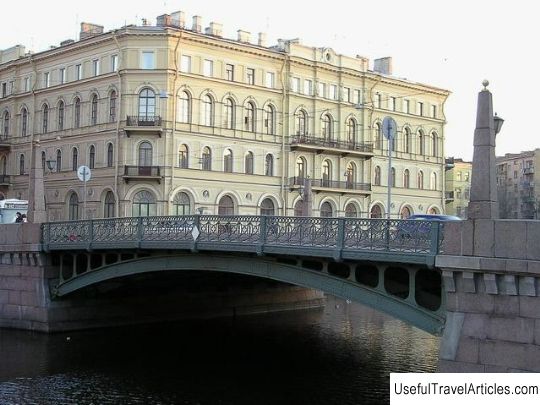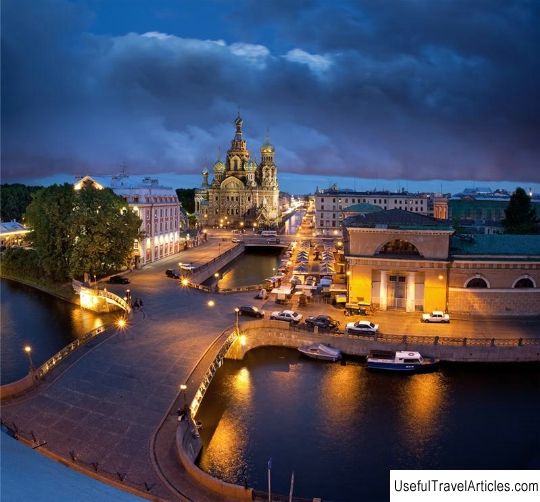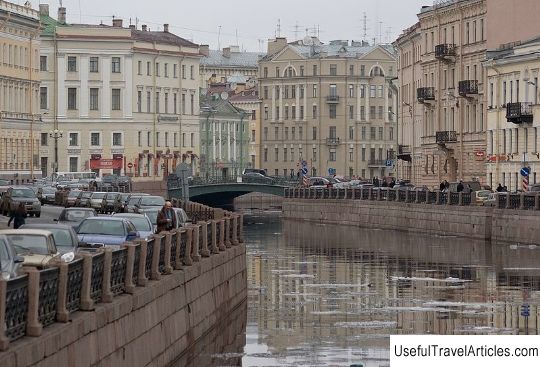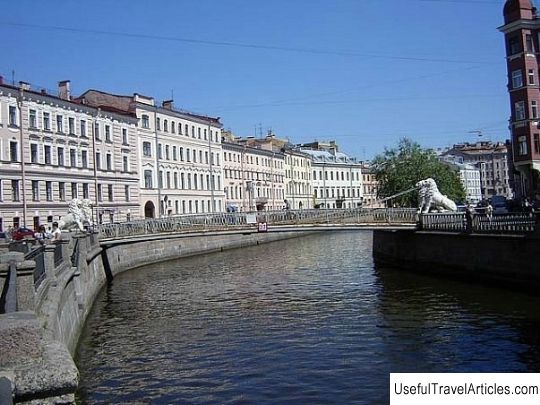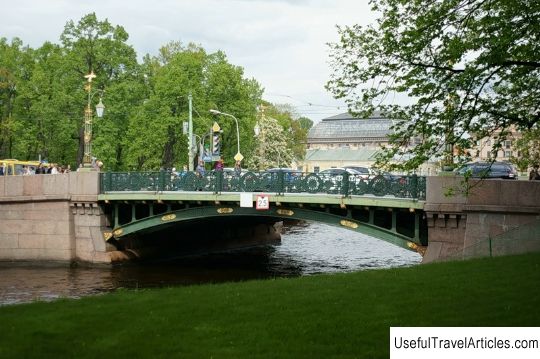Red Bridge description and photo - Russia - Saint Petersburg: Saint Petersburg
Rating: 8,5/10 (3023 votes) 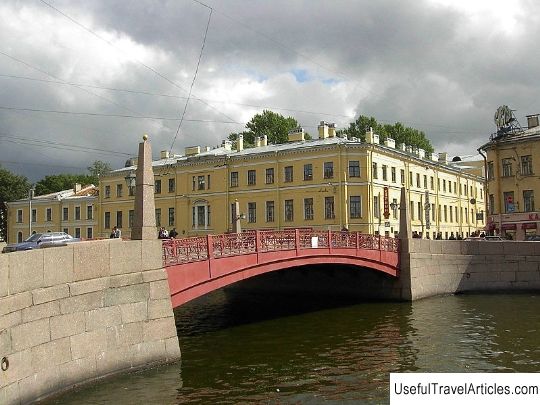
Red Bridge description and photos - Russia - Saint Petersburg: Saint Petersburg. Detailed information about the attraction. Description, photos and a map showing the nearest significant objects. Photo and descriptionThe Red Bridge is a historical and architectural monument of federal significance. It is the only one of the four "colored" bridges across the Moika River, built according to the standard design of the architect William (Vasily Ivanovich) Geste (1753-1832), preserved in its original form today. By the way, the Red Bridge is unique not only for the preservation of its architecture, but also for its “colored” name. The rest of the colored bridges of the Moika have lost their original appearance, and one of them has been renamed: Yellow Bridge is now Pevchesky. The Blue and Green bridges retain their name, along with the Red Bridge, but, unfortunately, their original architecture has been lost. Today the lower "water" part and the railings are painted near the bridges. The very fact of the appearance of "colored" bridges is curious. The thing is, that such bridges of the same type across the Moika in St. Petersburg were built four. They were located close to each other and the inhabitants often confused them. It was decided to eliminate this inconvenience with the help of color. The Red Bridge connects the 2nd Admiralteysky and Kazansky Islands and is the border between the Admiralteysky and Central regions of St. Petersburg. Red - pedestrian and road bridge; by type of construction it is single-span, made of double-hinged welded arches (with a steel arched main span). Its total length today is 42 meters, the width between the railings is 16.8 meters. Initially, the bridge on the Moika appeared in 1717 and was called, oddly enough, Bely. It was a wooden drawbridge, painted white. This is where its name comes from. The bridge was rebuilt in 1737 by the Dutch engineer Hermann van Boles. In order to pass mast vessels under the bridge, a 70 cm wide gap was built in one of the spans, which, if necessary, was closed with removable shields. In 1778, the bridge was repainted and, in accordance with the new color, renamed Red. During the next reconstruction at the end of the 18th century, the bridge became three-span. During the reconstruction of 1808-1814, according to the project of engineer William Geste, the bridge becomes cast-iron, single-span, has an arched structure with a hinged vault. New cast iron structures of the bridge were made at Demidov's factories in the Urals. The stone pillars of the bridge are faced with granite. For the railings, a cast-iron lattice was used, the pattern of which repeats the pattern of the metal fence of the embankment. The lighting of the bridge has also been changed: Obelisks made of granite were erected with tetrahedral lanterns suspended from them, suspended on metal brackets. To date, the obelisks with lanterns have been restored and have their original appearance, and the railings of the bridge separating the roadway from the sidewalk have not been reconstructed and have survived from earlier times. In the period from 1953 to 1954. The cast iron structures of the Red Bridge were replaced by arched steel structures (designed by engineer V. Blazhevich): the span structure of the bridge was made of seven metal double-hinged arches, interconnected by cross beams and longitudinal ties. At the same time, the appearance of the bridge is completely preserved. Then, under the leadership of an architect, a member of the Union of Architects of the USSR, Alexander Lukich Rotach (1893-1990) and the granite obelisks of the Red Bridge were recreated in their original form; between the sidewalks and the roadway, old cast-iron railings have been restored, similar to the railings of the Moika River embankment adjacent to the bridge. The facades of the bridge have a traditional red color. The next restoration of the bridge, during which the lanterns were repaired, the cast-iron and granite fencing was restored, was carried out in 1998.       We also recommend reading Ensemble of the Bolshoi (Menshikov) Palace description and photos - Russia - St. Petersburg: Lomonosov (Oranienbaum) Topic: Red Bridge description and photo - Russia - Saint Petersburg: Saint Petersburg. |
